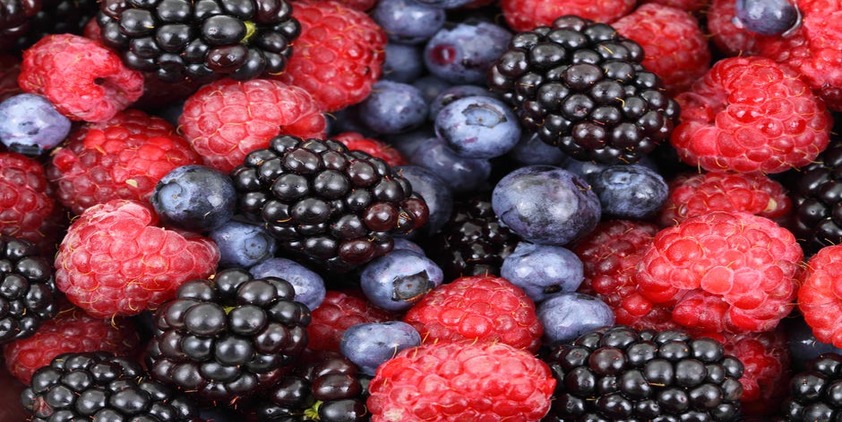

September 27, 2018 | Categories: Health
There’s plenty of evidence that a high-sugar diet can come with some very damaging health risks. Too much added sugar has been linked to increased risk of high blood pressure, high cholesterol, reduced “good” cholesterol, inflammation, insulin resistance, obesity, type 2 diabetes, and heart disease. But that doesn’t mean all sugar is bad or that you need to cut it all out. Read: The sugars found in a can of cola are not the same as those in a cup of fresh berries.
Natural sugars are the ones found in whole, unprocessed foods — the fructose in bananas or berries, or lactose in a glass of skim milk, says Vanessa Voltolina LaBue, RDN, a clinical dietitian in private practice in New York City.
“Foods with natural sugars tend to be low in calories and sodium, and high in water content and many important vitamins and minerals,” she explains. The fiber in fruits slows down how quickly your body digests it, so you don’t get the same sugar spike you get after eating a doughnut, LaBue says. And the lactose in milk comes with a healthy serving of protein that provides sustained energy, keeping you full longer than the sugars in a soda.
Added sugars, like the ones in doughnuts and soda, are the ones to be more concerned about. Put simply, added sugars are any sugar that gets added to a food — either by you, a chef, or a food manufacturer — before it goes in your mouth.
Added sugars include the high fructose corn syrup lurking in some ketchups and breads, as well as the honey or agave you might add to a mug of tea or smoothie. Because they don’t necessarily come packaged with other good-for-you nutrients, like protein and fiber, our bodies digest them more quickly and can cause a rapid increase in blood glucose. And over time having consistently high blood glucose contributes to problems like obesity, diabetes, heart disease, and more, according to research published in April 2014 in the journal JAMA Internal Medicine.
The high amounts of refined and added sugars found in snack foods, sweets, and sodas have been linked with weight gain, as they tend to be calorie dense with none of the nutritive benefits, says LaBue. These types of sugars can cause rapid increases in blood sugar, which may increase risk of insulin resistance, and increase the risk for developing type 2 diabetes. Extra sugar may also increase risk of developing nonalcoholic fatty liver disease, as well as increased triglyceride levels, which may contribute to cardiovascular disease. And in a statement published in the journal Circulation, the American Heart Association (AHA) linked high intakes of added sugars with heightened rates of obesity and heart disease.
To avoid these risks, the AHA recommends women should consume no more than 6 teaspoons (tsp) of added sugar daily (25 grams or about 100 calories), and that men should limit their added sugar intake to 9 tsp or less (36 grams or about 150 calories). If you’re adding 2 tsp of sugar to your daily coffee, eating cereal or granola that contains added sugar, and drizzling a store-bought salad dressing on your greens, you may be at or near your daily added-sugar limit by lunchtime. Add these 50 foods to your shopping list.
Don’t be fooled just because you stay away from sweets. Added sugars hide in a number of foods, like processed frozen foods, baby food, dried fruit, cereal, granola, instant oatmeal, salad dressings, ketchup, barbecue sauces, pasta sauces, flavored yogurt, protein bars, and more. Sugar goes by a lot of different names — more than 60, if we’re talking about what’s listed on nutrition labels. Here are a few to look out for: brown sugar, corn sweetener, corn syrup, rice syrup, dextrose, maltose, barley malt, fructose sweetener, fruit juice concentrates, glucose, high-fructose corn syrup, honey, invert sugar, lactose, maltose, malt syrup, maple syrup, molasses, pancake syrup, raw sugar, sucrose, trehalose, and turbinado sugar. To identify an added sugar, be suspect of words that end with an “-ose,” as well as phrases that contain “syrup” or “malt.”
Remember, ingredients on a packaged food are listed in descending order in terms of weight, so when you see these names at the top of the ingredients list, the product contains a lot of sugar.
Some celebrities and others credit weight-loss successes to eliminating all sugars (even the natural ones). But the sugars found in fruit and dairy are part of a healthy diet and shouldn’t be on the naughty foods list.
“Like any component of a diet, you can overdo it on sugar, even if it’s naturally occurring,” says LaBue. But most people can stay in the healthy range when it comes to natural sugars if they focus on choosing whole foods over processed ones — try a few slices of fresh fruit on a peanut butter sandwich instead of a jelly or jam, which likely has extra added sugar — and focus on eating a well-balanced diet. Check out the top fall foods for weight loss.
The USDA recommends 2 to 2.5 cups of fruit daily for adult men, and 1.5 to 2 cups for women 30 and over. And adults should get two to three servings of dairy per day — 1 cup of milk, 1 cup of nonfat or low-fat yogurt, or 1.5 ounces of natural cheese all count as one serving.
It’s also important to keep your lifestyle and physical activity level in mind when it comes to those recommendations, LaBue adds. For more active individuals, more servings of fruit can be a healthful way to add needed calories.
Read the full article on Everyday Health.
Leave a Reply